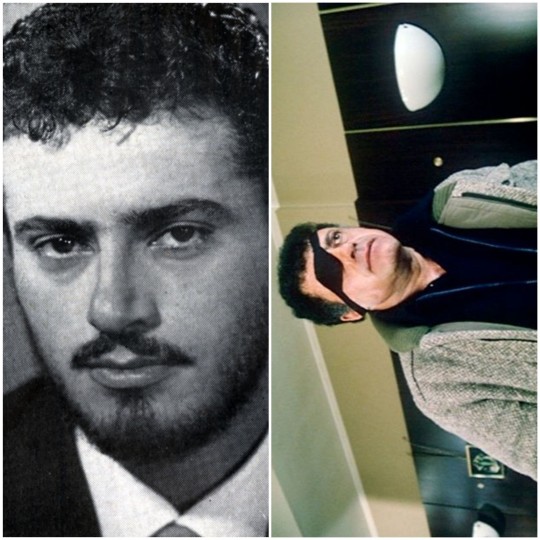#nando cicero
Text

Franco Franchi-Martine Beswick "Último tango a Zagarol" 1974, de Nando Cicero.
14 notes
·
View notes
Text


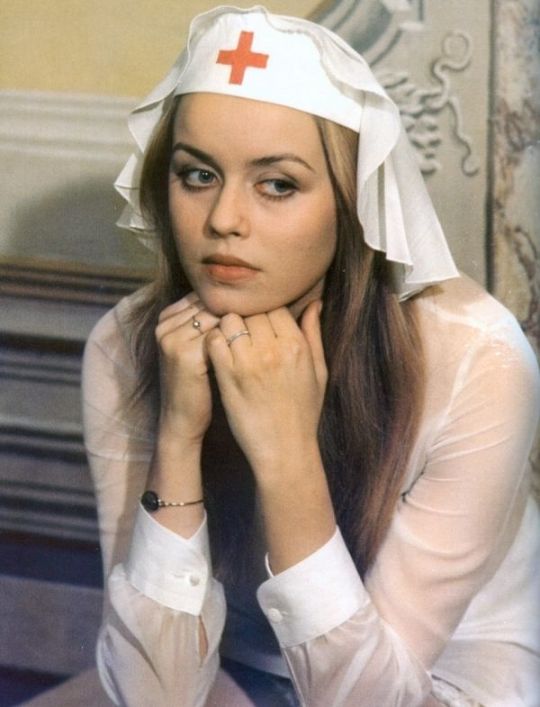
Gloria Guida
La minorenne, regia di Silvio Amadio (1974)
Quella età maliziosa, regia di Silvio Amadio (1975)
Blue Jeans, regia di Mario Imperoli (1975)
La novizia, regia di Pier Giorgio Ferretti (1975)
Peccati di gioventù, regia di Silvio Amadio (1975)
La liceale, regia di Michele Massimo Tarantini (1975)
Il gatto mammone, regia di Nando Cicero (1975)
Il medico... la studentessa, regia di Silvio Amadio (1976)
Il solco di pesca, regia di Maurizio Liverani (1976)
Scandalo in famiglia, regia di Marcello Andrei (1976)
La ragazza alla pari, regia di Mino Guerrini (1976)
L'affittacamere, regia di Mariano Laurenti (1976)
Maschio latino... cercasi, regia di Giovanni Narzisi (1977)
Orazi e Curiazi 3 - 2, regia di Giorgio Mariuzzo (1977)
Il triangolo delle Bermude (The Bermuda Triangle), regia di René Cardona Jr. (1978)
La liceale nella classe dei ripetenti, regia di Mariano Laurenti (1978)
Indagine su un delitto perfetto, regia di Giuseppe Rosati (1978)
Avere vent'anni, regia di Fernando Di Leo (1978)
Travolto dagli affetti familiari, regia di Mauro Severino (1978)
L'infermiera di notte, regia di Mariano Laurenti (1979)
La liceale seduce i professori, regia di Mariano Laurenti (1979)
La liceale, il diavolo e l'acquasanta, regia di Nando Cicero (1979)
Fico d'India, regia di Steno (1980)
Bollenti spiriti, regia di Giorgio Capitani (1981)
La casa stregata, regia di Bruno Corbucci (1982)
Sesso e volentieri, regia di Dino Risi (1982)
Improvvisamente Natale, regia di Francesco Patierno (2022)
30 notes
·
View notes
Photo

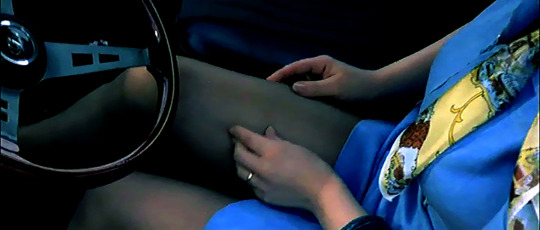
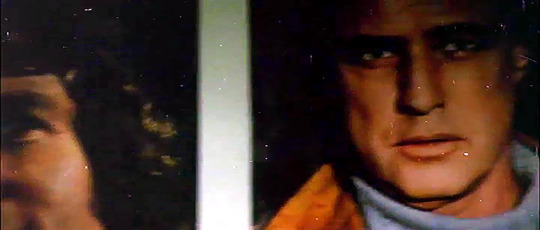



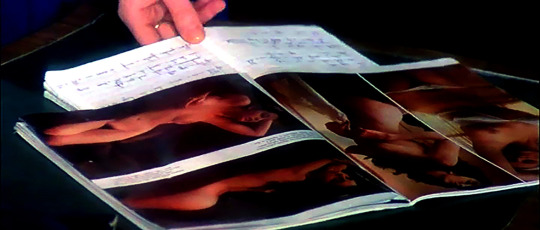


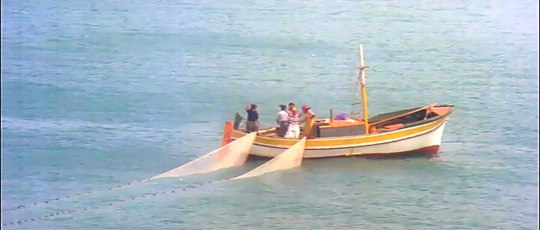
Nando Cicero, L'insegnante, 1975
5 notes
·
View notes
Photo
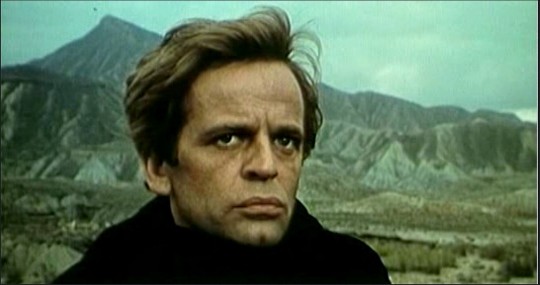
“Twice a judas”.AKA Due Volte Giuda by Nando Cicero (1968) Klaus Kinski in front of Pico de Alfaro, Las Salinillas #Almeria
#pico de alfaro#nando cicero#klaus kinski#las salinillas#twice a judas#due volte giuda#Almeria#tabernas desert#cinema#western
6 notes
·
View notes
Text
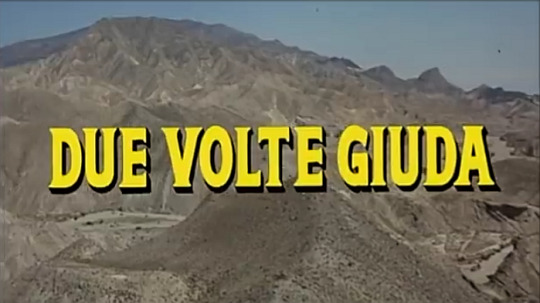
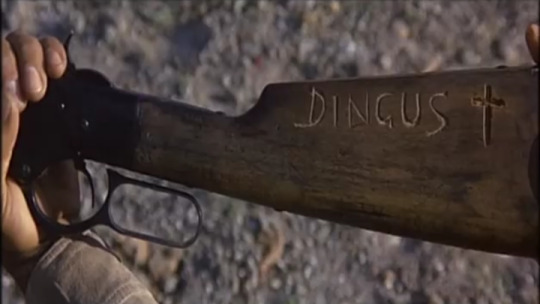




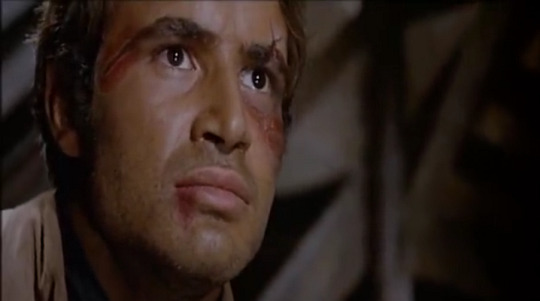

Due volte Giuda/Twice a Judas (Nando Cicero, 1969)
#due volte giuda#twice a judas#nando cicero#antonio sabato#klaus kinski#western#spaghetti western#italian movies#movies#have some spaghetti#yessferatu
3 notes
·
View notes
Photo

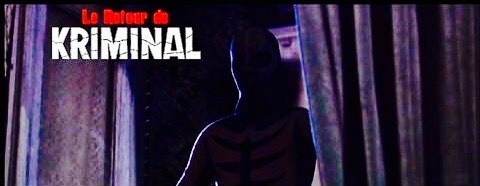

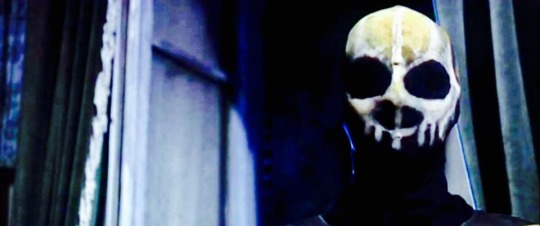

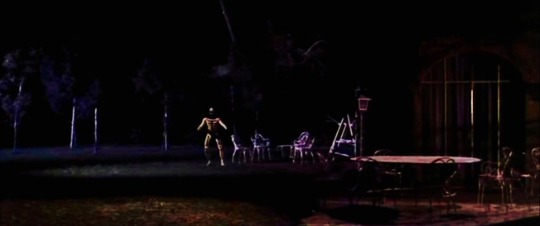

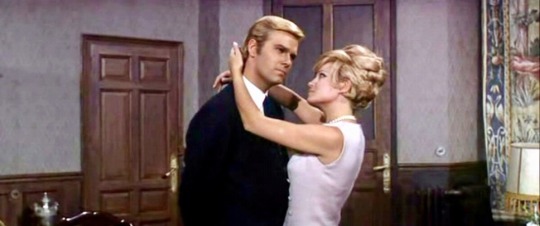

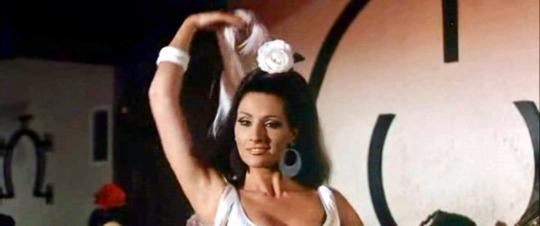
1968
Il marchio di Kriminal
Also Known As (AKA)
Spain Los cuatro budas de Kriminal
France Le Retour de Kriminal
Greece (transliterated) O dolofonos me tin kitrini maska
Germany Die Maske Kriminal
Uk Usa Mark of Kriminal
Directed by Fernando Cerchio
Nando Cicero … (uncredited)
Music by Manuel Parada & Piero Umiliani
Writing Credits
Eduardo Manzanos Brochero … (story) (as Eduardo M. Brochero)
Eduardo Manzanos Brochero … (screenplay) (as Eduardo M. Brochero)
Luciano Secchi … (comics)
Roberto Raviola … (comics)
Release Dates
Spain 24 June 1968 (Barcelona)
France 14 May 1969
Spain 26 October 1970 (Madrid)
Spain 1 May 1982 (Madrid) (re-release)
Cast (in credits order)
Glenn Saxson Glenn Saxson…
Kriminal
Helga Liné Helga Liné …
Mara Gitan
Andrea Bosic Andrea Bosic …
Inspector Patrick Milton
Armando Francioli Armando Francioli … Robson (as Frank Olivier)
Tomás Picó Tomás Picó …
Thomas Patterson
Evi Rigano Evi Rigano …
Janet
Anna Zinnemann Anna Zinnemann …
Gloria
Franca Dominici Franca Dominici …
Ethel Smith
Ugo Sasso Ugo Sasso …
Von Beck (as Hugo Arden)
María Francés María Francés …
Bertha (as Maria Francee)
Gino Marturano Gino Marturano …
Captain
Mirella Pamphili Mirella Pamphili …
Secretary of Von Beck
Félix Dafauce Félix Dafauce …
Mr. Brown
Alberto Fernández Alberto Fernández … Funeral Director (as Alberto Fernandez)
Giancarlo Prete Giancarlo Prete
Saturno Cerra Saturno Cerra …
Dickson’s Assistant
Rest of cast listed alphabetically:
Agustín Bescos Agustín Bescos …
Man at Auction (uncredited)
Juan Cazalilla Juan Cazalilla …
Atkins (uncredited)
Franco Fantasia Franco Fantasia …
(uncredited)
filming locations
Beirut, Lebanon
Madrid, Spain
Rome, Lazio, Italy
#il marchio di kriminal#los cuatro budas de kriminal#the diabolikal super kriminal#kriminal#the mask of kriminal#die maske kriminal#glenn saxon#glennsaxson#helga liné#helga line#fernando cerchio#umberto lenzi#umbertolenzi#nando cicero#piero umiliani#franco fantasia#andrea bosic#italian cinefumetto#italian cinefumetti#cinefumetti#cinefumetto#comic movies#comic#comics#international cult#cult#cinema cult#italian cult#giallo fever
8 notes
·
View notes
Text

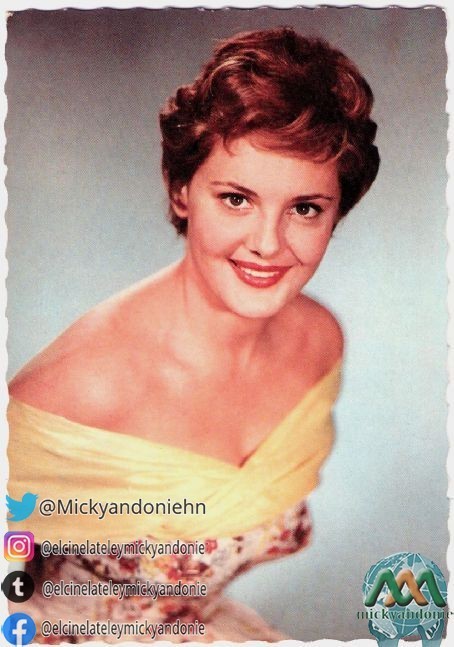


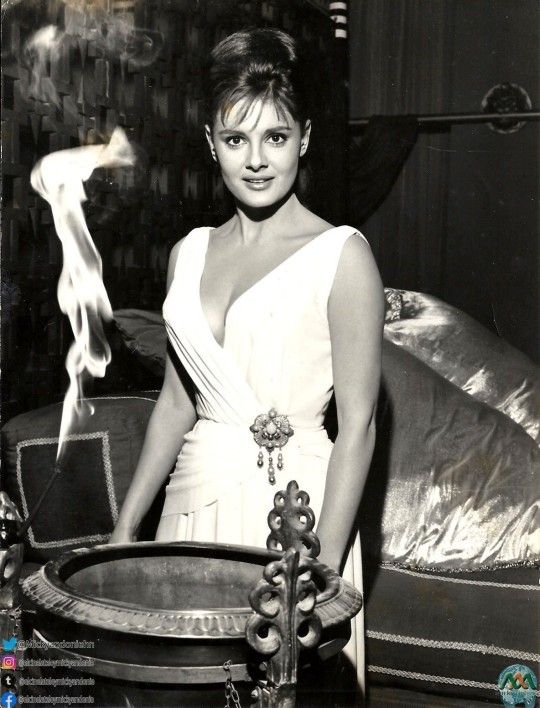

Rossana Podestà.
Filmografía
- Domani è un altro giorno, de Léonide Moguy (1951).
- I sette nani alla riscossa, de Paolo William Tamburella (1951).
- Guardias y ladrones (Guardie e ladri), de Steno (Stefano Vanzina) y Mario Monicelli (1952).
- Strano appuntamento, de Desiderius Hamza (1952).
- Gli angeli del quartiere, de Carlo Borghesio (1952).
- Io, Amleto, de Giorgio Simonelli (1952).
- Il moschettiere fantasma, de Max Calandri (1952).
- Don Lorenzo, de Carlo Ludovico Bragaglia (1952).
- La voce del silenzio, de Georg Wilhelm Pabst (1953).
- La red, de Emilio Fernández (1953).
Nosotros dos, de Emilio Fernández (1953).
- Fanciulle di lusso, de Bernard Vorhaus (1953).
- Viva la rivista!, de Enzo Trapani (1953).
- Addio figlio mio!, de Giuseppe Guarino (1953).
- Le ragazze di San Frediano, de Valerio Zurlini (1954).
- Playa prohibida, de Julián Soler.5(1955)
- Ulises (Ulisse), de Mario Camerini (1955).
- Canzoni di tutta Italia, de Domenico Paolella (1955).
- Non scherzare con le donne, de Giuseppe Bennati (1955).
- Helena de Troya (Elena di Troia / Helen of Troy), de Robert Wise (1956).
- Santiago, de Gordon Douglas (1956).
- L'isola dei pirati, de Robert Darène (1957).
- La espada y la cruz (La spada e le croce), de Carlo Ludovico Bragaglia (1958).
- Vento di passioni, de Richard Wilson (1958).
- L'isola in capo al mondo, de Edmond Greville (1959).
- Un vaso de whisky, de Julio Coll (1959).
- La furia de los bárbaros (La furia dei barbari), de Guido Malatesta (1960).
- La grande vallata, de Angelo Dorigo (1961).
- Sodoma y Gomorra (Sodoma e Gomorra / Sodom and Gomorrah), de Robert Aldrich (1962).
- L'arciere delle mille e una notte, de Antonio Margheriti (1962).
- La vergine di Norimberga, de Antonio Margheriti (1963).
- La moneda rota (F.B.I. operazione Baalbek), de Hugo Fregonese y Marcello Giannini (1964).
- Le ore nude, de Marco Vicario (1964).
- Siete hombres de oro (Sette uomini d'oro), de Marco Vicario (1965).
- El gran golpe de los siete hombres de oro (Il grande colpo dei sette uomini d'oro), de Marco Vicario (1966).
- Il prete sposato, de Marco Vicario (1970).
- Homo Eroticus, de Marco Vicario (1971).
- L'uccello migratore, de Steno (1972).
-Paolo il caldo, de Marco Vicario (1973).
- Il gatto mammone, de Nando Cicero (1975).
- Il letto in piazza, de Bruno Gaburro (1976).
- Pane, burro e marmellata, de Giorgio Capitani (1977).
- Siete chicas peligrosas (Sette ragazze di classe), de Pedro Lazaga (1979).
- Tranquille donne di campagna, de Claudio Giorgi (1980).
- I seduttori della domenica, de Dino Risi (1980).
- El desafío de Hércules (Ercole), de Lewis Coates (Luigi Cozzi) (1983).
- Segreti segreti, de Giuseppe Bertolucci (1985).
Créditos: Tomado de Wikipedia
https://es.wikipedia.org/wiki/Rossana_Podest%C3%A0
#HONDURASQUEDATEENCASA
#ELCINELATELEYMICKYANDONIE
3 notes
·
View notes
Text
GIANCARLO FERRANDO, LA FOTOGRAFIA DEI FILM DI GENERE
GIANCARLO FERRANDO, LA FOTOGRAFIA DEI FILM DI GENERE
In Italia abbiamo avuto tanti direttori della fotografia il cui contributo è stato fondamentale per la riuscita di film entrati di diritto nella storia del cinema.
Anche sui set delle pellicole considerate minori hanno lavorato dei grandi professionisti, capaci di esaltare visivamente copioni e prove attoriali non sempre di prima qualità.
A sinistra, Giancarlo Ferrando (1939-2020) con il regista…
View On WordPress
0 notes
Photo


9. Februar 2017
Heute gesehen: Die Zeit der Geier (Originaltitel: Il tempo degli avvoltoi, alternativer deutscher Titel: Gebrandmarkt), Spielfilm, Italien, 1967. Erstaufführung: 2. August 1967 (Italien), 25. Oktober 1968 (BRD) im Filmverleih Adria (FSK: 18). Laufzeit: 95 Min. (laut IMDB), 91:33 Min. (DVD). Bild: Farbe. Bildformat: 1,85:1 (16:9) (DVD), laut IMDB: 2.35:1 (Euroscope-Breitwand-Format). Drehbuch: Fulvio Gicca Palli. Musik: Piero Umiliani. Kamera: Fausto Rossi. Produktion: Pacific Cinematografica. Regie: Nando Cicero. Darsteller: George Hilton, Frank Wolff, Pamela Tudor u.a. IMDB-Bewertung: 6.5/10
Handlung
> „Kitosh, a young cowboy working for Don Jaime Morelos, is beaten almost to death under his employers orders for flirting with Don Jaime's frivolous wife. Full of hatred towards Don Jaime, Kitosh leaves the ranch and begins life as an outlaw joining up with renowned bandit Tracy the Black. Tension sets in between the two men because Kitosh kills only when he has to, whereas Tracy kills just for the fun of it, deriving a sadistic pleasure from other people's suffering.“ [Spaghetti Western Database]
Darsteller:
George Hilton: Kitosch
Frank Wolff: Joshua Tracy
Pamela Tudor: Ehefrau von Don Alberto
Eduardo Fajardo: Don Alberto (im Original: Don Jaime Mendoza)
Franco Balducci: Big John (im Original: Francisco)
Femi Benussi: Señorita
Cristina Iosani (als Cristina Josani): Rubia
John Bartha: Sheriff
Maria Grazia Marescalchi: Traps u.a.
Bei IMDB ist die Zuordnung der Personen durcheinandergeraten: dort sind die Rollen von Cristina Iosani und Femi Benussi vertauscht. Weitere Verwirrung wird in den Synchronfassungen gestiftet; denn man hat ohne erkennbaren Grund einige Namen geändert. So wird Don Jaime Mendoza in der deutschen Verleihfassung immer nur Don Alberto genannt, in den USA wurde daraus Don Jaime Morelos; der Name seiner Frau, Steffy Mendoza, wird nie erwähnt (zumindest nicht in der deutschen Synchronisation); aus Francisco macht man Big John.
Bewertung
> „Ein Gangster schließt mit einem Galgenvogel Freundschaft, um seine Gegenspieler aus der Vergangenheit zu vernichten. Dürftiger, brutaler Italowestern, mit Zynismen auf Spielfilmlänge gebracht.“ [Lexikon der internationalen Films = Filmdienst]

(Kitosch wird gebrandmarkt)
Wie bei einem Film dieser Art nicht anders zu erwarten gibt es eine Menge Leichen. Film Maniax zählt „ca. 40 Mexikaner, 25 Gringos, ein Mönch und zwei Frauen“ [Film Maniax]. Die Figuren werden getrieben von Rache und Geldgier. Insbesondere der „schwarze“ Tracy, den Frank Wolff verkörpert, ist ein ausgemacht fieses Exemplar dieser Machart. Während Kitosch eine ambivalente Gestalt ist, die ausgeprochen menschlich, beizeiten sogar sympathisch erscheint, ist Joshua Tracy ein humorloser Sadist. Die Figur ist dennoch interessant, weil es Frank Wolff gelingt, sie ohne „over-acting“ zu präsentieren.
Der Soundtrack von Piero Umiliani ist genre-typisch gelungen, aber ohne besondere Höhepunkte.
Mir lag die DVD von Koch Media vor, die 2013 in der Reihe Western Unchained erschienen war (EAN: 4020628939564). Sie legt die italienische Verleihfassung zugrunde, daher kommen in der Synchronisation Passagen mit italienischem Originalton und deutschen Untertiteln vor. Die FSK-Bewertung wurde zudem nachträglich von „18“ auf „16“ heruntergestuft, so daß beim Datenträger „FSK 18“ aufgeprägt ist, während auf dem Umschlag ein „FSK 16“-Logo prangt.
Quellen: [IMDB]; [OFDB]; [Italo-Cinema]; [Film Maniax]; [Spaghetti Western Database]; [Koch Media]; [Wikipedia (de)]. Screenshots von der DVD
0 notes
Text
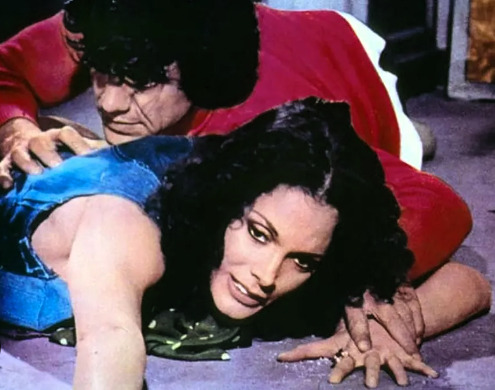
Franco Franchi-Martine Beswick "Ultimo tango a Zagarol" 1974, de Nando Cicero.
1 note
·
View note
Text
There is no such thing as western civilisation
The values of liberty, tolerance and rational inquiry are not the birthright of a single culture. In fact, the very notion of something called ‘western culture’ is a modern invention
by Kwame Anthony Appiah
“But here’s the important point: it would not have occurred to Herodotus to think that these three names corresponded to three kinds of people: Europeans, Asians, and Africans. He was born at Halicarnasus – Bodrum in modern Turkey. Yet being born in Asia Minor didn’t make him an Asian; it left him a Greek. And the Celts, in the far west of Europe, were much stranger to him than the Persians or the Egyptians, about whom he knew rather a lot. Herodotus only uses the word “European” as an adjective, never as a noun. For a millennium after his day, no one else spoke of Europeans as a people, either.
Then the geography Herodotus knew was radically reshaped by the rise of Islam, which burst out of Arabia in the seventh century, spreading with astonishing rapidity north and east and west. After the prophet’s death in 632, the Arabs managed in a mere 30 years to defeat the Persian empire that reached through central Asia as far as India, and to wrest provinces from Rome’s residue in Byzantium.
The Umayyad dynasty, which began in 661, pushed on west into north Africa and east into central Asia. In early 711, it sent an army across the straits of Gibraltar into Spain, which the Arabs called al-Andalus, where it attacked the Visigoths who had ruled much of the Roman province of Hispania for two centuries. Within seven years, most of the Iberian Peninsula was under Muslim rule; not until 1492, nearly 800 years later, was the whole peninsula under Christian sovereignty again.
The Muslim conquerors of Spain had not planned to stop at the Pyrenees, and they made regular attempts in the early years to move further north. But near Tours, in 732CE, Charles Martel, Charlemagne’s grandfather, defeated the forces of al-Andalus, and this decisive battle effectively ended the Arab attempts at the conquest of Frankish Europe. The 18th-century historian Edward Gibbon, overstating somewhat, observed that if the Arabs had won at Tours, they could have sailed up the Thames. “Perhaps,” he added, “the interpretation of the Koran would now be taught in the schools of Oxford, and her pulpits might demonstrate to a circumcised people the sanctity and truth of the revelation of Mahomet.”

What matters for our purposes is that the first recorded use of a word for Europeans as a kind of person, so far as I know, comes out of this history of conflict. In a Latin chronicle, written in 754 in Spain, the author refers to the victors of the Battle of Tours as “Europenses”, Europeans. So, simply put, the very idea of a “European” was first used to contrast Christians and Muslims. (Even this, however, is a bit of a simplification. In the middle of the eighth century much of Europe was not yet Christian.)
Now, nobody in medieval Europe would have used the word “western” for that job. For one thing, the coast of Morocco, home of the Moors, stretches west of Ireland. For another, there were Muslim rulers in the Iberian Peninsula – part of the continent that Herodotus called Europe – until nearly the 16th century. The natural contrast was not between Islam and the west, but between Christendom and Dar al‑Islam, each of which regarded the other as infidels, defined by their unbelief.”
“There are many ways of embellishing the story of the golden nugget. But they all face a historical difficulty; if, that is, you want to make the golden nugget the core of a civilisation opposed to Islam. Because the classical inheritance it identifies was shared with Muslim learning. In Baghdad of the ninth century Abbasid caliphate, the palace library featured the works of Plato and Aristotle, Pythagoras and Euclid, translated into Arabic. In the centuries that Petrarch called the Dark Ages, when Christian Europe made little contribution to the study of Greek classical philosophy, and many of the texts were lost, these works were preserved by Muslim scholars. Much of our modern understanding of classical philosophy among the ancient Greeks we have only because those texts were recovered by European scholars in the Renaissance from the Arabs.
In the mind of its Christian chronicler, as we saw, the battle of Tours pitted Europeans against Islam; but the Muslims of al-Andalus, bellicose as they were, did not think that fighting for territory meant that you could not share ideas. By the end of the first millennium, the cities of the Caliphate of Cordoba were marked by the cohabitation of Jews, Christians, and Muslims, of Berbers, Visigoths, Slavs and countless others.
There were no recognised rabbis or Muslim scholars at the court of Charlemagne; in the cities of al-Andalus there were bishops and synagogues. Racemondo, Catholic bishop of Elvira, was Cordoba’s ambassador to the courts of the Byzantine and the Holy Roman empires. Hasdai ibn Shaprut, leader of Cordoba’s Jewish community in the middle of the 10th century, was not only a great medical scholar, he was the chairman of the Caliph’s medical council; and when the Emperor Constantine in Byzantium sent the Caliph a copy of Dioscorides’s De Materia Medica, he took up Ibn Shaprut’s suggestion to have it translated into Arabic, and Cordoba became one of the great centres of medical knowledge in Europe. The translation into Latin of the works of Ibn Rushd, born in Cordoba in the 12th century, began the European rediscovery of Aristotle. He was known in Latin as Averroes, or more commonly just as “The Commentator”, because of his commentaries on Aristotle. So the classical traditions that are meant to distinguish western civilisation from the inheritors of the caliphates are actually a point of kinship with them.
The term 'western culture' is surprisingly modern – more recent certainly than the phonograph
But the golden-nugget story was bound to be beset by difficulties. It imagines western culture as the expression of an essence – a something – which has been passed from hand to hand on its historic journey. The pitfalls of this sort of essentialism are evident in a wide range of cases. Whether you are discussing religion, nationality, race or culture, people have supposed that an identity that survives through time and space must be propelled by some potent common essence. But that is simply a mistake.”
....”Spain, in the heart of “the west,” resisted liberal democracy for two generations after it took off in India and Japan in “the east,” the home of Oriental despotism. Jefferson’s cultural inheritance – Athenian liberty, Anglo-Saxon freedom – did not preserve the United States from creating a slave republic. At the same time, Franz Kafka and Miles Davis can live together as easily – perhaps even more easily – than Kafka and his fellow Austro-Hungarian Johann Strauss. You will find hip-hop in the streets of Tokyo. The same is true in cuisine: Britons once swapped their fish and chips for chicken tikka masala, now, I gather, they’re all having a cheeky Nando’s.
Once we abandon organicism, we can take up the more cosmopolitan picture in which every element of culture, from philosophy or cuisine to the style of bodily movement, is separable in principle from all the others – you really can walk and talk like an African-American and think with Matthew Arnold and Immanuel Kant, as well as with Martin Luther King and Miles Davis. No Muslim essence stops the inhabitants of Dar al-Islam from taking up anything from western civilisation, including Christianity or democracy. No western essence is there to stop a New Yorker of any ancestry taking up Islam.
The stories we tell that connect Plato or Aristotle or Cicero or Saint Augustine to contemporary culture in the north Atlantic world have some truth in them, of course. We have self-conscious traditions of scholarship and argumentation. The delusion is to think that it suffices that we have access to these values, as if they are tracks on a Spotify playlist we have never quite listened to. If these thinkers are part of our Arnoldian culture, there is no guarantee that what is best in them will continue to mean something to the children of those who now look back to them, any more than the centrality of Aristotle to Muslim thought for hundreds of years guarantees him an important place in modern Muslim cultures.”
more:https://www.theguardian.com/world/2016/nov/09/western-civilisation-appiah-reith-lecture
2 notes
·
View notes
Video
youtube
Malobbia – CM 000 – Released in 1975.
Franco Cerri – From Cathetus To Cicero.
Drums – Gianni Cazzola.
Electric Bass – Stefano Cerri.
Electric Guitar – Franco Cerri.
Percussion – Walter Martino.
Piano, Electric Piano – Nando De Luca.
Tenor Saxophone, Clarinet – Gian Luigi Trovesi.
6 notes
·
View notes
Link
7 ago 2018 17:46
IL NECROLOGIO DEI GIUSTI - ADDIO A JIMMY IL FENOMENO, 86 ANNI DA LUCERA. PIÙ DI CENTO FILM, 'DRIVE IN' E 'PICCOLO SLAM', I RUOLI ERANO QUASI SEMPRE GLI STESSI: IL MATTO, L’ASSATANATO, IL BARISTA, IL FAN DI CELENTANO, IL PETOMANE, LA SUORA, E GARANTIVANO LA RISATA SICURA DEL PUBBLICO CHE LO RICONOSCEVA IMMEDIATAMENTE. “QUESTO HA UNA FACCIA DA SCEMO NATURALE”, SEMBRA CHE GLI ABBIA DETTO TOTÒ - LA SUA UNICA INTERVISTA A 'STRACULT' (AL RITORNO SBAGLIÒ TRENO E FINÌ NON SI SA DOVE)
-
Marco Giusti per Dagospia
Jimmy il Fenomeno rip
Solo il cinema italiano poteva produrre un attore stracult come Jimmy il Fenomeno, nato a Lucera come Luigi Origine Soffrano nel 1932 e morto a Milano in una casa di cura dove ormai risiedeva da quasi vent’anni. Più vero fenomeno che caratterista o attore, con tanto di occhi storti, eccitazione da maniaco continua e risata isterica, lo abbiamo visto in più di cento film, spesso neanche segnalato nei titoli di testa o di coda, oltre alle partecipazioni a programmi tv come “Drive In”, “Piccolo slam”, e ovviamente “Stracult”, che gli dedicò nel 2001 l’unica intervista della sua vita e una partecipazione straordinaria in un memorabile sketch con Fernando Di Leo e Eva Henger diretto dai Manetti bros.
La sua presenza era così costante nei film degli anni 70-80 che in Sesso in testa, commedia sexy diretta in segreto da Fernando Di Leo, la protagonista Pilar Velasquez, quando se lo vede alla porta di casa sua esclama: “Pure in questo film ce l’abbiamo?”. Del resto era quasi impossibile non averlo nel cinema alto, medio, basso e bassissimo del tempo.
I ruoli erano quasi sempre gli stessi, il matto, l’assatanato, il barista, il fan di Celentano, il petomane, la suora, e permettevano una risata sicura da parte del pubblico che lo riconosceva immediatamente. “Questo ha una faccia da scemo naturale”, sembra che gli abbia detto Totò quando lo incontrò a Lucera battezzandolo per il cinema.
E il cinema fece, fin dai primi anni ’60, grazie a Luciano Salce, da Il federale a La voglia matta, La cuccagna, grazie a Piero Vivarelli e a Adriano Celentano, che lo vollero nei loro primi film, Io bacio… tu baci, Uno strano tipo, allo stesso Totò, Il monaco di Monza. Ma fece anche peplum, Ercole alla conquista di Atlantide, western, 10.000 dollari per un massacro, qualche raro film d’autore, Giorno per giorno, disperatamente di Alfredo Giannetti, dove faceva ovviamente il matto, qualche Franco e Ciccio, I figli del leopardo, Paolo il freddo, L’esorciccio, dove è il matto in caduta che giustifica il cartello “caduta matti”, prima di approdare ai grandi generi anni ’70 della commedia sexy e dei Monnezza dove fu davvero onnipresente.
Si alternò così tra dottoresse, professoresse, Pierini, impossibile da gestire proprio come attore, mentre veniva richiamato in servizio anche da Luciano Salce, Vieni avanti cretino, Celentano, Il bisbetico domato, e scoperto perfino da Renato Pozzetto, Il ragazzo di campagna, e Paolo Villaggio, Super Fantozzi e Fantozzi in Paradiso, di fatto il suo ultimo film.
Qualche regista cercò di costruirgli un ruolo che andasse oltre la battuta di pochi secondi, penso allo stesso Fernando Di Leo, foggiano e quindi quasi compaesano, che lo volle anche in Colpo in canna con Ursula Andress e Lino Banfi, e a Nando Cicero, che in La soldatessa alle grandi manovre costruisce una serie di gag memorabili con lui e Gianfranco D’Angelo.
Ovviamente dilaga nei film barzelletta sui matti. Ne I carabimatti si frantuma le palle con un martello tipo Tafazzi e alla domanda di Gianni Agus sul fatto che non si faccia male, risponde con un “Sì, ma quando sbaglio è una goduria che non finisce”. Ma lo troviamo anche nei film dei Vanzina, Arrivano i gatti, dove fa se stesso, Eccezziunale… veramente, poi un Mi faccia causa di Steno, dove è un tifoso del Foggia, nel fondamentale Attila flagello di Dio di Castellano e Pipolo, dove è una bionda bruttissima.
Con Jimmy il Fenomeno il nostro cinema del ’900 perde quel vento di follia e di politicamente scorretto che l’aveva attraversato negli anni di piombo. Per questo il Ricci di “Drive In” e dell’”Araba fenice” lo aveva spesso chiamato e rimane memorabile la fotografia che immortala la stretta di mano tra Jimmy e Berlusconi sotto lo sguardo attento di Ricci. Quando lo chiamammo a Roma per “Stracult”, al ritorno sbagliò treno e finì non so dove.
0 notes
Text
E’ morto Renzo Ozzano, fu star della commedia scollacciata degli anni ’70 e ’80
E’ morto a 83 anni Renzo Ozzano, attore torinese protagonista di decine di pellicole di culto degli anni ’70. Nel 1972 era nel cast (non accreditato) di Torino nera di Carlo Lizzani, poi con La dottoressa del distretto militare di Nando Cicero del 1976 comincia la sua luga carriera tra i protagonisti della commedia scollacciata […]
Per il contenuto completo visitate il sito http://ift.tt/1tIiUMZ
da Quotidiano Piemontese - Home Page http://ift.tt/2xJTwdI
via Adriano Montanaro - Alessandria
0 notes
Photo
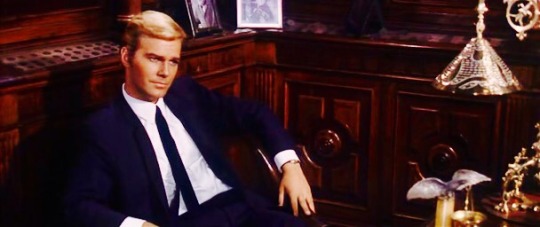
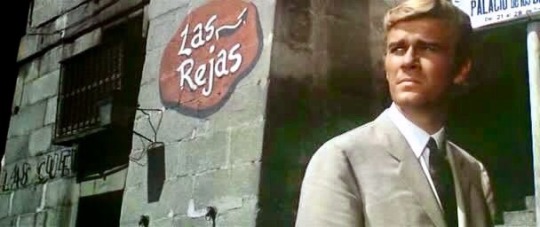
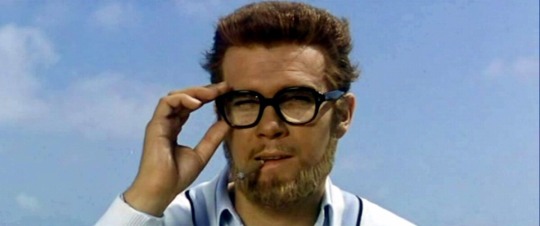

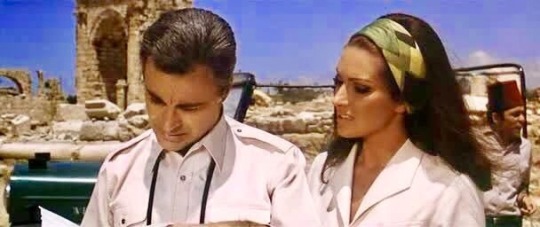


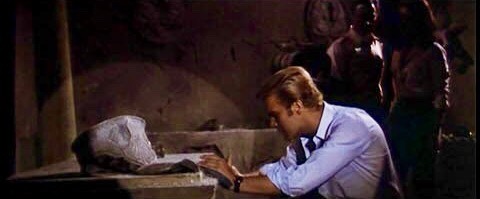


1968 Il marchio di Kriminal Also Known As (AKA) Spain Los cuatro budas de Kriminal France Le Retour de Kriminal Greece (transliterated) O dolofonos me tin kitrini maska Germany Die Maske Kriminal Uk Usa Mark of Kriminal Directed by Fernando Cerchio Nando Cicero ... (uncredited) Music by Manuel Parada & Piero Umiliani Writing Credits Eduardo Manzanos Brochero ... (story) (as Eduardo M. Brochero) Eduardo Manzanos Brochero ... (screenplay) (as Eduardo M. Brochero) Luciano Secchi ... (comics) Roberto Raviola ... (comics) Release Dates Spain 24 June 1968 (Barcelona) France 14 May 1969 Spain 26 October 1970 (Madrid) Spain 1 May 1982 (Madrid) (re-release) Cast (in credits order) Glenn Saxson Glenn Saxson... Kriminal Helga Liné Helga Liné ... Mara Gitan Andrea Bosic Andrea Bosic ... Inspector Patrick Milton Armando Francioli Armando Francioli ... Robson (as Frank Olivier) Tomás Picó Tomás Picó ... Thomas Patterson Evi Rigano Evi Rigano ... Janet Anna Zinnemann Anna Zinnemann ... Gloria Franca Dominici Franca Dominici ... Ethel Smith Ugo Sasso Ugo Sasso ... Von Beck (as Hugo Arden) María Francés María Francés ... Bertha (as Maria Francee) Gino Marturano Gino Marturano ... Captain Mirella Pamphili Mirella Pamphili ... Secretary of Von Beck Félix Dafauce Félix Dafauce ... Mr. Brown Alberto Fernández Alberto Fernández ... Funeral Director (as Alberto Fernandez) Giancarlo Prete Giancarlo Prete Saturno Cerra Saturno Cerra ... Dickson's Assistant Rest of cast listed alphabetically: Agustín Bescos Agustín Bescos ... Man at Auction (uncredited) Juan Cazalilla Juan Cazalilla ... Atkins (uncredited) Franco Fantasia Franco Fantasia ... (uncredited) filming locations Beirut, Lebanon Madrid, Spain Rome, Lazio, Italy
#il marchio di kriminal#los cuatro budas de kriminal#kriminal#le retour de kriminal#the mask of kriminal#die maske kriminal#glennsaxson#glenn saxon#helga liné#helga line#franco fantasia#fernando cerchio#nando cicero#umberto lenzi#umbertolenzi#piero umiliani#italian cinefumetto#italian cinefumetti#cinefumetti#cinefumetto#comic movies#comic#comics#international cult#cult#cinema cult#italian cult#italian cinema#italian giallo
1 note
·
View note
